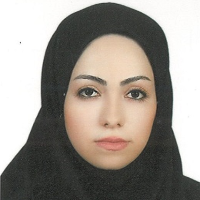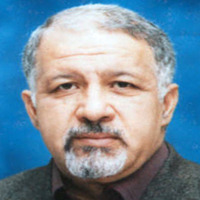Applying a meta-synthesis qualitative approach to provide a design pattern for a policy laboratory
The specialization of calligraphy is among the most complex specialties, skills and arts; It is therefore very difficult to pursue sound and effective policy-making, which necessitates the establishment of a laboratory to develop, implement and evaluate policies designed to be implemented in the community. Therefore, the purpose of this study is to explain the design pattern of the line laboratory.
In this research, with a qualitative research approach and a hybrid tool that includes weekly steps, a systematic evaluation and analysis of the results and findings of the previous research has been done.
The design model of the calligraphy laboratory in the form of 8 main categories, according to important study areas such as calligraphy problem diagnosis, calligraphy laboratory staff, calligraphy laboratory stakeholders, the role of calligraphy laboratory in government, calligraphy laboratory programs, location of calligraphy laboratory, physical space of calligraphy laboratory and the expected output of the line laboratory is provided. Therefore, in order to identify the problems of community unity, policy laboratories should be established with the presence of policy experts as well as stakeholders in different areas of the country with appropriate facilities and physical space to identify community problems with proper planning and with the cooperation of the group. Different research institutes to find solutions to these problems and implement the explained policies in cooperation with the state and the government.Limitations and consequences: One of the limitations of this research is the lack of similar work and the lack of completely familiar experts with the subject of policy laboratory design.
Qualitative research, with all its advantages, comes with weaknesses in generalizability and validity. Therefore, in order to increase the generalizability of this research, it is necessary for researchers to evaluate the above model in other high-risk industries. Another consequence of this model is that if the policy experts use this model, a laboratory with a suitable physical and environmental space by employing appropriate staff and stakeholders to explain practical solutions to society's problems will be made In general, there will be a place for the intersection of discourse between knowledgeable experts in various aspects of a major community problem, which can solve many problems and prevent many negative consequences in the community.
Considering that in this study, a model for creating a policy laboratory has been developed, using the model of this study can make the process of designing and developing macro policies more operational. Therefore, the added value of this study can be considered as facilitating the policy-making process in the context of the policy laboratory by following the components and indicators of the proposed model. On the other hand, the raw model obtained from the study of texts by the meta-combined method can be used as a basis for future research in order to build tools and practical guidelines for those in charge of the policy laboratory. This research is very innovative and will make a great contribution to knowledge enhancement in the country.
-
Proposing a Framework for Development Diplomacy Policy: Antecedents and Consequences
Milad Molajan, Aliasghar Pourezzat*, Seyed Jalal Dehghani Firouzabadi, Hormat Asghari
Digital Transformation and Administration Innovation, Winter 2025 -
Designing a Semi-Centralized Model of Health Governance in Iran
Mohammadbaqer Ghalibaf *, Abbasahmadi, Bahador Zarei, Aliasghar Pour Ezzat, Mohammadali Kiani
Social Business Journal, Winter 2025 -
The Policy-Making Model Based on Conflict of Interest Management in Crisis Conditions in the Country's Health System(Case of Study: The Experience of COVID-19)
Mahnaz Sabzi, Abbas Monavarian*, Tayebeh Abbasi
Management Strategies in Health System, -
Implementation of Interpretive Structural Modeling to Determine The Role of Free Zones in The Iran's Economic Development
Alemeh Khosravikatuli *, Abbas Monavariyan, Ezatallah Abbasian
Journal of Public Administration Perspective, -
Studying the Influential Factors on Decreasing Organizational Bullying: the Role of Human Resource Practices and Employee Well-Being
, Tayebe Amirkhani, Ahmad Aali*
Journal of New research approaches in management and accounting, -
Studying the Antecedents of Employee's Subjective Wellbeing
, Akram Hadizadeh Moghadam
Journal of Public Administration Perspective,




